AMD Radeon R9 260 OEM Specs
|
|
|
|
|
AMD Radeon R9 260 OEM Specs
Specifications of the AMD Radeon R9 260 OEM graphics card dedicated to the desktop sector, with 896 shading units, its maximum frequency is 1,1GHz The table below makes it possible to observe well the lithography, the number of transistors (if present), the offered cache memory, the quantity of texture mapping units, of render output units, the release date, the GFLOPS performance, the values obtained in the benchmark platforms.
Note: Commissions may be earned from the link above.
This page contains references to products from one or more of our advertisers. We may receive compensation when you click on links to those products. For an explanation of our advertising policy, please visit this page.
Specifications:
| Graphics card | AMD Radeon R9 260 OEM | |||
| Market (main) | Desktop | |||
| Release date | Q4 2013 | |||
| Model number | 215-0839039, Bonaire XT | |||
| GPU name | Bonaire | |||
| Architecture | GCN 1. |
|||
| Generation | Volcanic Islands R9 200 | |||
| Lithography | 28 nm | |||
| Transistors | 2.080.000.000 | |||
| Bus interface | PCIe 3.0 x16 | |||
| GPU clock | 1,10 GHz | |||
| Memory frequency | 1.625 MHz | |||
| Effective memory speed | 6,5 GB/s | |||
| Memory size | 1 GB | |||
| Memory type | GDDR5 | |||
| Memory bus | 128 Bit | |||
| Memory bandwidth | 104,0 GB/s | |||
| TDP | 85 W | |||
| Suggested PSU | 250W ATX Power Supply | |||
| Multicard technology | — | |||
| Outputs |
1x DVI |
|||
| Cores (compute units, SM, SMX) | 14 | |||
| Shading units | 896 | |||
| TMUs | 56 | |||
| ROPs | 16 | |||
| Cache memory | 256 KB | |||
| Pixel fillrate | 17,6 GPixel/s | |||
| Texture fillrate | 61,6 GTexel/s | |||
| Performance FP32 (float) | 2,0 TFLOPS | |||
| Performance FP64 (double) | 123,2 GFLOPS | |||
| Amazon | ||||
| eBay |
Price: For technical reasons, we cannot currently display a price less than 24 hours, or a real-time price. This is why we prefer for the moment not to show a price. You should refer to the respective online stores for the latest price, as well as availability.
This is why we prefer for the moment not to show a price. You should refer to the respective online stores for the latest price, as well as availability.
TMUs: texture mapping units. This unit was a physical processor separated from the main graphics processing units. It is able to distort a bitmap image, and also to resize it, to rotate it and to place it as a texture onto a plane of a specific 3D model.
ROPs: render output units. The other name of this unit is raster operations pipeline. This hadware component is taking pixel and texel information, and processing it through vector and matrix operations. The result will be a depth value or a final pixel. It is able to control antialiasing with the merge of several sample into one pixel.
Note: Commissions may be earned from the links above.
Performances :
Performance comparison between this graphics card and those of equivalent power, for this we consider the results generated on benchmark softwares and rendering performances.
Pixel fillrate performance comparison for this graphics card:
| Pixel fillrate performance in GPixels/s | |
|---|---|
|
AMD Radeon 550 |
18,93 |
|
AMD Radeon RX 550 |
18,93 |
|
AMD Radeon RX 560D |
18,8 |
|
AMD Radeon RX 560DX |
18,8 |
|
Nvidia Quadro K1200 |
17,98 |
|
AMD Radeon R9 260 OEM |
17,6 |
|
Asus Phoenix Radeon RX 550 4GB |
17,14 |
|
Yeston RX550-4G D5 LP Radeon Chill |
17,14 |
|
AMD Radeon RX 455 OEM |
16,8 |
|
AMD Radeon R9 360 OEM |
16,8 |
Note: Commissions may be earned from the links above. These scores are only an
These scores are only an
average of the performances got with these graphics cards, you may get different results.
The term pixel fillrate is refering to the number of pixels that the video card is able to generate every second. This performance is achieved by multiplying the raster output units (ROPs) by the clock frequency of the graphics processor unit (GPU).
Texture fillrate performance comparison for this graphics card:
| Texture fillrate performance in GTexels/s | |
|---|---|
|
AMD Radeon RX 560D |
65,8 |
|
Intel Arc A310 |
64 |
|
AMD Radeon R7 370 |
62,4 |
|
EVGA GeForce GTX 1050 FTW Gaming |
62,24 |
|
EVGA GeForce GTX 1050 SSC Gaming |
61,76 |
|
AMD Radeon R9 260 OEM |
61,6 |
|
MSI GeForce GTX 1050 Gaming X |
61,24 |
|
EVGA GeForce GTX 1050 SC Gaming |
61,24 |
|
MSI GeForce GTX 1050 Aero ITX OC |
60,72 |
|
Nvidia GeForce GTX 1050 |
58,2 |
Note: Commissions may be earned from the links above.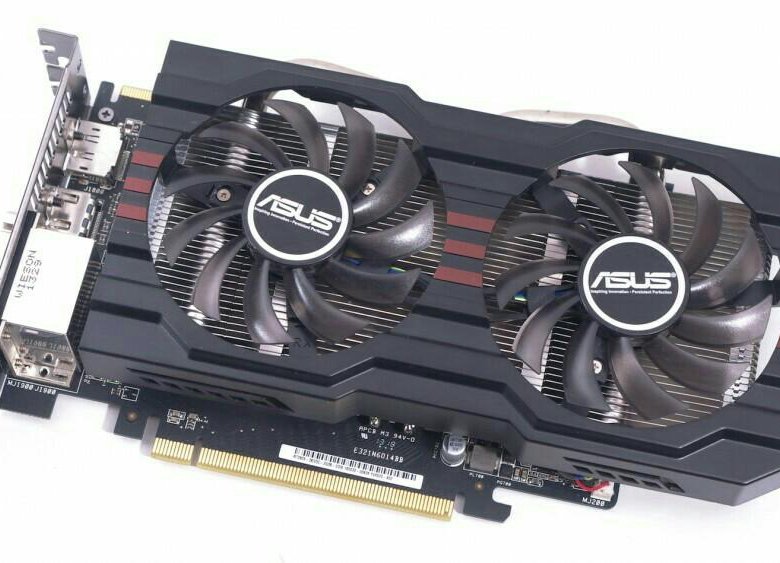 These scores are only an
These scores are only an
average of the performances got with these graphics cards, you may get different results.
The term texture fillrate refers to the number of map texture elements (texels) that the GPU is capable of generating per second. This performance is achieved by multiplying the texture mapping units (TMUs) by the clock frequency of the graphics processor unit.
FP32 performance comparison (single precision; float; floating-point 32) for this graphics card:
| FP32 Performance in GFLOPS | |
|---|---|
|
Nvidia GeForce GTX 1050 Ti |
2.138 |
|
AMD Radeon RX 560D |
2.106 |
|
AMD Radeon RX 560DX |
2.106 |
|
EVGA GeForce GTX 1050 FTW Gaming |
1.  992 992 |
|
EVGA GeForce GTX 1050 SSC Gaming |
1.976 |
|
AMD Radeon R9 260 OEM |
1.971 |
|
MSI GeForce GTX 1050 Gaming X |
1.960 |
|
EVGA GeForce GTX 1050 SC Gaming |
1.960 |
|
MSI GeForce GTX 1050 Aero ITX OC |
1.943 |
|
EVGA GeForce GTX 1050 Gaming |
1.862,4 |
Note: Commissions may be earned from the links above. These scores are only an
average of the performances got with these graphics cards, you may get different results.
Single precision floating point format, also known as FP32, is a computer number format that typically occupies 32 bits in PC memory.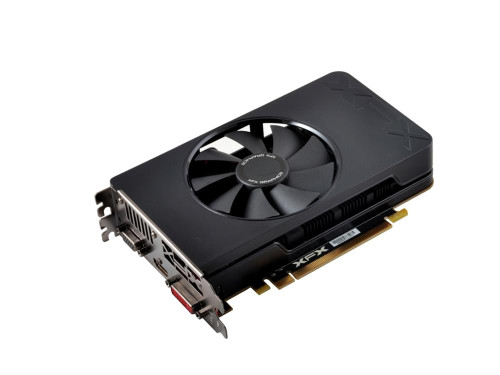 This represents a wide dynamic range of numeric values that employs a floating point.
This represents a wide dynamic range of numeric values that employs a floating point.
List of comparisons:
AMDAMD RadeonAMD Radeon GraphicsAMD Radeon HDAMD Radeon HD 6000AMD Radeon HD 7000AMD Radeon HD 7800AMD Radeon HD 8000AMD Radeon MobileAMD Radeon ProAMD Radeon Pro MobileAMD Radeon R2AMD Radeon R4AMD Radeon R5AMD Radeon R6AMD Radeon R7AMD Radeon R7 200AMD Radeon R9AMD Radeon R9 200AMD Radeon RXAMD Radeon RX 300AMD Radeon RX 400AMD Radeon RX 500AMD Radeon RX 5000AMD Radeon RX 5000 MobileAMD Radeon RX 6000AMD Radeon RX 6000 MobileAMD Radeon RX 7000AMD Radeon RX VegaAMD Radeon VegaAMD Radeon Vega 11AMD Radeon Vega 3AMD Radeon Vega 6AMD Radeon Vega 8AMD Radeon Vega MobileAppleARMARM MaliARM Mali-400ARM Mali-450ARM Mali-470ARM Mali-G31ARM Mali-G51ARM Mali-G52ARM Mali-G57ARM Mali-G610ARM Mali-G68ARM Mali-G71ARM Mali-G710ARM Mali-G72ARM Mali-G76ARM Mali-G77ARM Mali-G78ARM Mali-T720ARM Mali-T760ARM Mali-T764ARM Mali-T820ARM Mali-T830ARM Mali-T860ARM Mali-T880ASRockAsusAsus GeForce 4000ATIATI Radeon HDATI Radeon HD 3000ATI Radeon HD 4000ATI Radeon HD 5000BFGBroadcomBroadcom VideoCoreColorfulColorful GeForce 4000DellDMPEVGAEVGA GeForce 1000EVGA GeForce 1600EVGA GeForce 2000EVGA GeForce 3000GainwardGainward GeForce 4000GigabyteGigabyte GeForce 4000ImaginationImagination PowerVRImagination PowerVR SGX543Imagination PowerVR SGX544IntelIntel ArcIntel Arctic SoundIntel HD GraphicsIntel Iris GraphicsIntel Iris Plus GraphicsIntel Iris Xe Graphics G7Intel Iris Xe Graphics MobileIntel UHD GraphicsIntel UHD Graphics 610Intel UHD Graphics 620Intel UHD Graphics 630Intel UHD Graphics 730Intel Xe GraphicsMicrosoftMicrosoft XboxMSIMSI GeForce 3000MSI GeForce 4000NintendoNvidiaNvidia GeForceNvidia GeForce 1000Nvidia GeForce 1000 MobileNvidia GeForce 1600Nvidia GeForce 1600 MobileNvidia GeForce 2000Nvidia GeForce 2000 MobileNvidia GeForce 3000Nvidia GeForce 3000 MobileNvidia GeForce 400Nvidia GeForce 4000Nvidia GeForce 500Nvidia GeForce 600Nvidia GeForce 600MNvidia GeForce 700Nvidia GeForce 700MNvidia GeForce 800M seriesNvidia GeForce 900Nvidia GeForce 900MNvidia GeForce GTNvidia GeForce GT 1000Nvidia GeForce GTXNvidia GeForce GTX 1000Nvidia GeForce GTX 1000 MobileNvidia GeForce GTX 1600Nvidia GeForce GTX 1600 MobileNvidia GeForce GTX 400Nvidia GeForce GTX 500Nvidia GeForce GTX 600Nvidia GeForce GTX 600 MobileNvidia GeForce GTX 700Nvidia GeForce GTX 700 MobileNvidia GeForce GTX 800 MobileNvidia GeForce GTX 900Nvidia GeForce GTX 900 MobileNvidia GeForce MXNvidia GeForce RTXNvidia GeForce RTX 2000Nvidia GeForce RTX 2000 MobileNvidia GeForce RTX 3000Nvidia GeForce RTX 3000 MobileNvidia GeForce RTX 4000Nvidia GM20BNvidia Quadro seriesNvidia TeslaNvidia VoltaPalitPalit GeForce 4000PNYQualcommQualcomm AdrenoSamsungSaplosSapphireSonySony PlayStationValveVivanteXFXYestonZotacZotac GeForce 4000Graphics cards groups
List of benchmarks:
FP32 performance
Equivalence:
AMD Radeon R9 260 OEM Nvidia equivalent
Disclaimer:
When you click on links to various merchants on this site and make a purchase, this can result in this site earning a commission.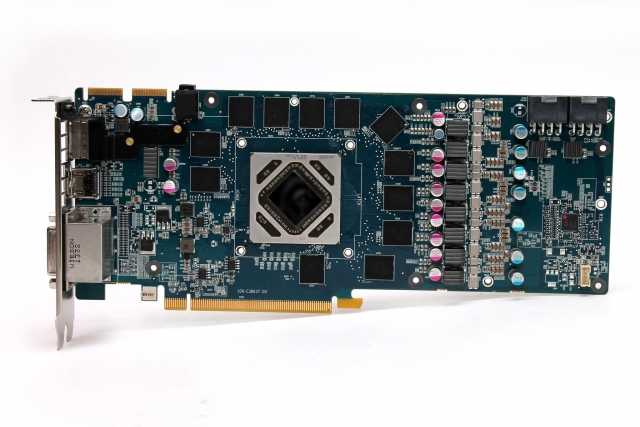 Affiliate programs and affiliations include, but are not limited to, the eBay Partner Network.
Affiliate programs and affiliations include, but are not limited to, the eBay Partner Network.
As an Amazon Associate I earn from qualifying purchases.
This page includes affiliate links for which the administrator of GadgetVersus may earn a commission at no extra cost to you should you make a purchase. These links are indicated using the hashtag #ad.
Information:
We do not assume any responsibility for the data displayed on our website. Please use at your own risk. Some or all of this data may be out of date or incomplete, please refer to the technical page on the respective manufacturer’s website to find the latest up-to-date information regarding the specifics of these products.
Radeon R9 260 OEM — Technical City
Radeon R9 260 OEM
Buy
- Interface PCIe 3.0 x16
- Core clock speed 1100 MHz
- Max video memory 1024 MB
- Memory type GDDR5
- Memory clock speed 6500 MHz
- Maximum resolution
Summary
AMD started Radeon R9 260 OEM sales 21 December 2013. This is GCN 2.0 architecture desktop card based on 28 nm manufacturing process and primarily aimed at gamers. 1 GB of GDDR5 memory clocked at 6.5 GHz are supplied, and together with 128 Bit memory interface this creates a bandwidth of 104.0 GB/s.
This is GCN 2.0 architecture desktop card based on 28 nm manufacturing process and primarily aimed at gamers. 1 GB of GDDR5 memory clocked at 6.5 GHz are supplied, and together with 128 Bit memory interface this creates a bandwidth of 104.0 GB/s.
Compatibility-wise, this is dual-slot card attached via PCIe 3.0 x16 interface. Its manufacturer default version has a length of 183 mm. 1x 6-pin power connector is required, and power consumption is at 85 Watt.
We have no data on Radeon R9 260 OEM benchmark results.
General info
Some basic facts about Radeon R9 260 OEM: architecture, market segment, release date etc.
| Place in performance rating | not rated | |
| Architecture | GCN 2.0 (2013−2017) | |
| GPU code name | Bonaire | |
| Market segment | Desktop | |
| Release date | 21 December 2013 (8 years ago) |
Technical specs
Radeon R9 260 OEM’s general performance parameters such as number of shaders, GPU base clock, manufacturing process, texturing and calculation speed. These parameters indirectly speak of Radeon R9 260 OEM’s performance, but for precise assessment you have to consider its benchmark and gaming test results.
These parameters indirectly speak of Radeon R9 260 OEM’s performance, but for precise assessment you have to consider its benchmark and gaming test results.
| Pipelines / CUDA cores | 896 | of 18432 (AD102) |
| Core clock speed | 1100 MHz | of 2610 (Radeon RX 6500 XT) |
| Number of transistors | 2,080 million | of 14400 (GeForce GTX 1080 SLI Mobile) |
| Manufacturing process technology | 28 nm | of 4 (GeForce RTX 4080 Ti) |
| Thermal design power (TDP) | 85 Watt | of 900 (Tesla S2050) |
| Texture fill rate | 61.60 | of 961.9 (Radeon RX 7900 XTX) |
| Floating-point performance | 1,971 gflops | of 16384 (Radeon Pro Duo) |
Compatibility, dimensions and requirements
Information on Radeon R9 260 OEM’s compatibility with other computer components. Useful when choosing a future computer configuration or upgrading an existing one. For desktop graphics cards it’s interface and bus (motherboard compatibility), additional power connectors (power supply compatibility).
Useful when choosing a future computer configuration or upgrading an existing one. For desktop graphics cards it’s interface and bus (motherboard compatibility), additional power connectors (power supply compatibility).
| Interface | PCIe 3.0 x16 | |
| Length | 183 mm | |
| Width | 2-slot | |
| Supplementary power connectors | 1x 6-pin |
Memory
Parameters of memory installed on Radeon R9 260 OEM: its type, size, bus, clock and resulting bandwidth. Note that GPUs integrated into processors have no dedicated memory and use a shared part of system RAM instead.
| Memory type | GDDR5 | |
| Maximum RAM amount | 1 GB | of 128 (Radeon Instinct MI250X) |
| Memory bus width | 128 Bit | of 8192 (Radeon Instinct MI250X) |
| Memory clock speed | 6500 MHz | of 21000 (GeForce RTX 3090 Ti) |
| Memory bandwidth | 104.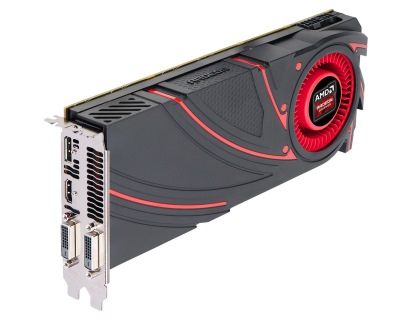 0 GB/s 0 GB/s |
of 14400 (Radeon R7 M260) |
Video outputs and ports
Types and number of video connectors present on Radeon R9 260 OEM. As a rule, this section is relevant only for desktop reference graphics cards, since for notebook ones the availability of certain video outputs depends on the laptop model, while non-reference desktop models can (though not necessarily will) bear a different set of video ports.
| Display Connectors | 1x DVI, 1x HDMI, 2x mini-DisplayPort | |
| HDMI | + |
API support
APIs supported by Radeon R9 260 OEM, sometimes including their particular versions.
| DirectX | 12 (12_0) | |
| Shader Model | 6.3 | |
| OpenGL | 4.6 | |
| OpenCL | 2. 0 0 |
|
| Vulkan | 1.2.131 |
Benchmark performance
Non-gaming benchmark performance of Radeon R9 260 OEM. Note that overall benchmark performance is measured in points in 0-100 range.
We have no data on Radeon R9 260 OEM benchmark results.
NVIDIA equivalent
We believe that the nearest equivalent to Radeon R9 260 OEM from NVIDIA is GeForce GTX 660.
GeForce GTX
660
Compare
Similar GPUs
Here is our recommendation of several graphics cards that are more or less close in performance to the one reviewed.
Radeon R7
260X
Compare
GeForce GTX
660
Compare
Radeon HD
7790
Compare
Radeon HD
7850
Compare
Radeon R7
360
Compare
Radeon R9
270
Compare
Recommended processors
These processors are most commonly used with Radeon R9 260 OEM according to our statistics.
Core i9
9990XE
11.1%
Core i7
3740QM
11.1%
A4
5000
11.1%
Ryzen 5
1600X
11.1%
FX
4100
11.1%
FX
8350
11.1%
Athlon
3000G
11.1%
Xeon
X3470
11. 1%
1%
Ryzen 5
2600
11.1%
User rating
Here you can see the user rating of the graphics card, as well as rate it yourself.
Questions and comments
Here you can ask a question about Radeon R9 260 OEM, agree or disagree with our judgements, or report an error or mismatch.
Please enable JavaScript to view the comments powered by Disqus.
AMD Radeon R9 260 and Radeon R9 255 for the OEM Market
AMD recently introduced the Radeon R7 260, another member of the Volcanic Islands generation, and now there are fresh models for the OEM market. Many of our readers will probably be primarily interested in the Radeon R9 260 (OEM) and Radeon R9 255 (OEM). It should be noted that both models belong to the high-end Radeon R9 family and not the mid-range Radeon R7 series.
Differences between Radeon R9260 (OEM) and Radeon R7 260X there is none. Both graphics cards are based on the «Bonaire» GPU, use 896 stream processors and up to 2048 MB of GDDR5 video memory with a 128-bit interface. The clock speeds are also the same. The graphics core runs at 1100 MHz and the memory runs at 1625 MHz. Accordingly, the power consumption of the OEM model should be at the level of 115 watts. Why AMD named the Radeon R7 260X for the OEM market as the Radeon R9 260 is unknown. Perhaps there are marketing reasons for that.
Both graphics cards are based on the «Bonaire» GPU, use 896 stream processors and up to 2048 MB of GDDR5 video memory with a 128-bit interface. The clock speeds are also the same. The graphics core runs at 1100 MHz and the memory runs at 1625 MHz. Accordingly, the power consumption of the OEM model should be at the level of 115 watts. Why AMD named the Radeon R7 260X for the OEM market as the Radeon R9 260 is unknown. Perhaps there are marketing reasons for that.
AMD Radeon R7 260X OEM Market Named Radeon R9260
A more or less new model is the Radeon R9 255 (OEM), which AMD also refers to as part of the Radeon R9 family. However, it’s one of the slowest graphics cards in the lineup and falls right in between the Radeon R7 250 and Radeon R7 260. According to our colleagues at TechpowerUp, the Radeon R9 255 (OEM) is based on the «Cape Verde» GPU and is a simple rebrand (except perhaps with slight changes in appearance) of the Radeon HD 7750 and Radeon HD 7770 models. It is equipped with 512 stream processors, 1024 or 2048 MB of video memory and operates at a frequency of 930 MHz (GPU) and 1625 MHz (memory), just falling in terms of performance between the two predecessors from the HD 7700 series.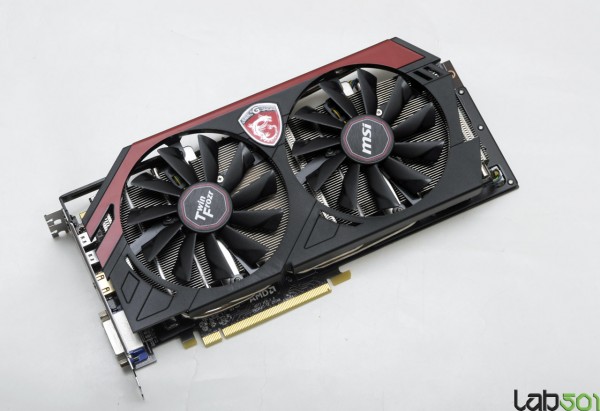 Since the maximum power consumption should not exceed 75 W, the Radeon R9 255 (OEM) can even do without an additional 6-pin connector PCI Express, like the Radeon HD 7750. Maximum power consumption should be between 55 and 80 watts.
Since the maximum power consumption should not exceed 75 W, the Radeon R9 255 (OEM) can even do without an additional 6-pin connector PCI Express, like the Radeon HD 7750. Maximum power consumption should be between 55 and 80 watts.
In addition, AMD recently introduced other models for the OEM market, such as Radeon R5 220, Radeon R5 235, Radeon R5 235X and others.
| Volcanic Islands | ||||
|---|---|---|---|---|
| Model | AMD Radeon R7 260 | AMD Radeon R7 260X | AMD Radeon R9 260 (OEM) | AMD Radeon R9 270 |
| Retail price | 95 euro | from 105 euros | N/A | from 160 euros |
| Manufacturer website | www.amd.com | www.amd.com | www.amd.com | www.amd.com |
| Specifications | ||||
| GPU | Bonaire | Bonaire | Bonaire | Curacao XT |
| Process | 28 nm | 28 nm | 28 nm | 28 nm |
| Number of transistors | 2. 08 billion 08 billion |
2.08 billion | 2.08 billion | 2.08 billion |
| GPU clock speed | 1000 MHz | 1100 MHz | 1100 MHz | 1000 MHz (1050 MHz) |
| Memory frequency | 1500 MHz | 1625 MHz | 1625 MHz | 1400 MHz |
| Memory type | GDDR5 | GDDR5 | GDDR5 | GDDR5 |
| Memory capacity | 1024/2048 MB | 1024/2048 MB | 1024/2048 MB | 2048/4096 MB |
| Memory interface | 128 bit | 128 bit | 128 bit | 256 bit |
| Memory bandwidth | 96 GB/s | 104 GB/s | 104 GB/s | 179.2 GB/s |
| DirectX version | 11.2 | 11.2 | 11.2 | 11.2 |
| Stream Processors | 768 | 896 | 896 | 1280 |
| Texture blocks | 48 | 56 | 56 | 80 |
| Raster Operations Pipelines (ROP) | 16 | 16 | 16 | 32 |
| Pixel Fill Rate | 16 Gpixel/s | 17. 6 Gpixel/s 6 Gpixel/s |
17.6 Gpixel/s | 33.6 Gpixel/s |
| SLI/CrossFire | CrossFire | CrossFire | CrossFire | CrossFire |
| Maximum power consumption | 95 W | 115 W | 115 W (?) | 180 W |
| Volcanic Islands | ||||
|---|---|---|---|---|
| Model | AMD Radeon R7 250 | AMD Radeon R9 255 (OEM) | AMD Radeon R7 260 | AMD Radeon R7 260X |
| Retail price | from 67 euros | N/A | 95 euro | from 105 euros |
| Manufacturer website | www.amd.com | www.amd.com | www.amd.com | www.AMD.com/en |
| Specifications | ||||
| GPU | Bonaire | Cape Verde | Bonaire | Bonaire |
| Process | 28 nm | 28 nm | 28 nm | 28 nm |
| Number of transistors | 2.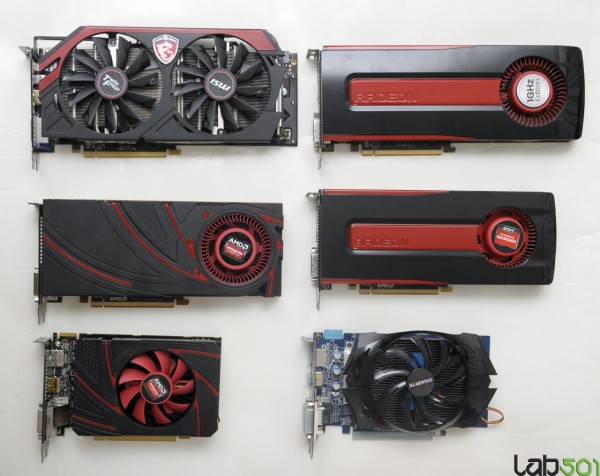 08 billion 08 billion |
1.5 billion |
2.08 billion | 2.08 billion |
| GPU clock speed | 1050 MHz | 930 MHz | 1000 MHz | 1100 MHz |
| Memory frequency | 1150 MHz | 1625 MHz | 1500 MHz | 1625 MHz |
| Memory type | GDDR5/DDR3 | GDDR5 | GDDR5 | GDDR5 |
| Memory capacity | 1024/2048 MB | 1024/2048 MB | 1024/2048 MB | 1024/2048 MB |
| Memory interface | 128 bit | 128 bit | 128 bit | 128 bit |
| Memory bandwidth | 73.6 GB/s | 104 GB/s | 96 GB/s | 104 GB/s |
| DirectX version | 11.2 | 11.2 | 11.2 | 11.2 |
| Stream Processors | 384 | 512 | 768 | 896 |
| Texture blocks | 24 | 32 | 48 | 56 |
| Raster Operations Pipelines (ROP) | 8 | 16 | 16 | 16 |
| Pixel Fill Rate | 8. 4 Gpixel/s 4 Gpixel/s |
14.88 Gpixel/s | 16 Gpixel/s | 17.6 Gpixel/s |
| SLI/CrossFire | — | CrossFire | CrossFire | CrossFire |
| Maximum power consumption | 65 W | 55-80 W (?) | 95 W | 115 W |
Radeon R9 260 OEM
Radeon R9 260 OEM
- PCIe 3.0 x16 interface
- Core clock 1100 MHz
- Video memory size 1024 MB
- Memory type GDDR5
- Memory frequency 6500 MHz
- Maximum resolution
Description
AMD started Radeon R9 260 OEM sales 21 December 2013. This is GCN 2.0 architecture desktop card based on 28 nm manufacturing process and primarily aimed at gamers. It has 1 GB of GDDR5 memory at 6.5 GHz, and coupled with a 128-bit interface, this creates a bandwidth of 104.0 GB / s.
In terms of compatibility, this is a two-slot PCIe 3.0 x16 card. The length of the reference version is 183 mm. An additional 1x 6-pin power cable is required for connection, and the power consumption is 85W.
We don’t have any test results for the Radeon R9 260 OEM.
General
Details of Radeon R9 260 OEM type (desktop or laptop) and architecture, as well as sales start time and cost at the time.
| place in the performance rating | is not participated in | |
| Architecture | GCN 2.0 (2013–2017) | of 16384 (Radeon Pro Duo) |
Compatibility and dimensions
Information on Radeon R9 260 OEM compatibility with other computer components. Useful for example when choosing the configuration of a future computer or to upgrade an existing one. For desktop video cards, these are the interface and connection bus (compatibility with the motherboard), the physical dimensions of the video card (compatibility with the motherboard and case), additional power connectors (compatibility with the power supply).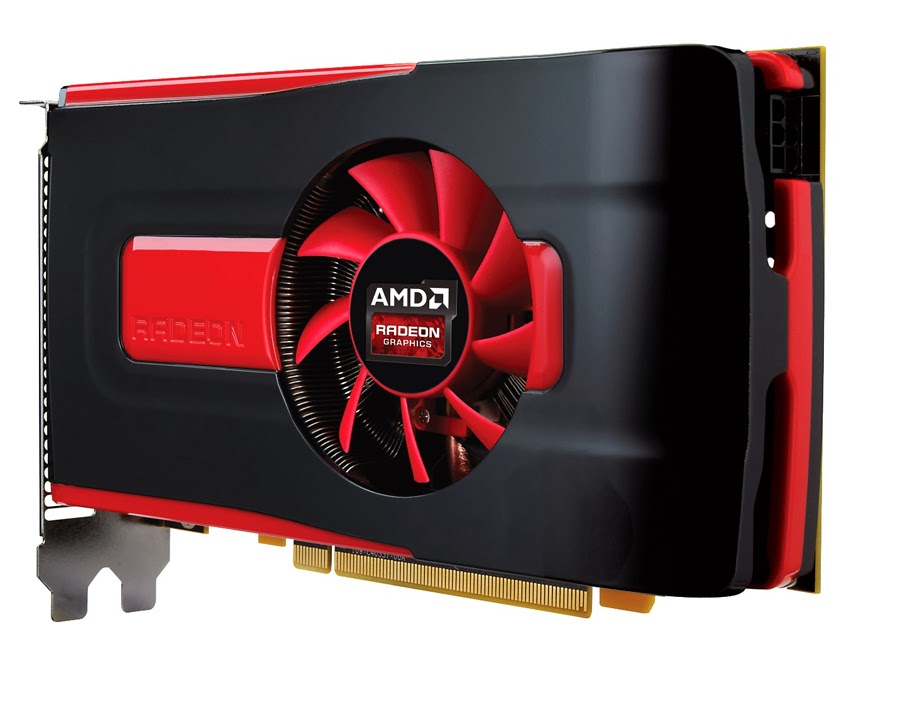
Benchmark tests
These are the results of the Radeon R9 260 OEM non-gaming benchmarks for rendering performance. The overall score is set from 0 to 100, where 100 corresponds to the fastest video card at the moment.
We don’t have any test results for the Radeon R9 260 OEM.
Competitor from NVIDIA
We believe that the nearest equivalent to Radeon R9 260 OEM from NVIDIA is GeForce GTX 660.
GeForce GTX
660
Compare
Other video cards
Here we recommend several video cards that are more or less similar in performance to the reviewed one.
Radeon R7
260X
Compare
GeForce GTX
660
Compare
Radeon HD
7790
Compare
Radeon R9
270
Compare
Radeon R7
260
Compare
GeForce GTX
650 Ti
Compare
Recommended Processors
According to our statistics, these processors are most commonly used with the Radeon R9 260 OEM.
Core i9
9990XE
11.
